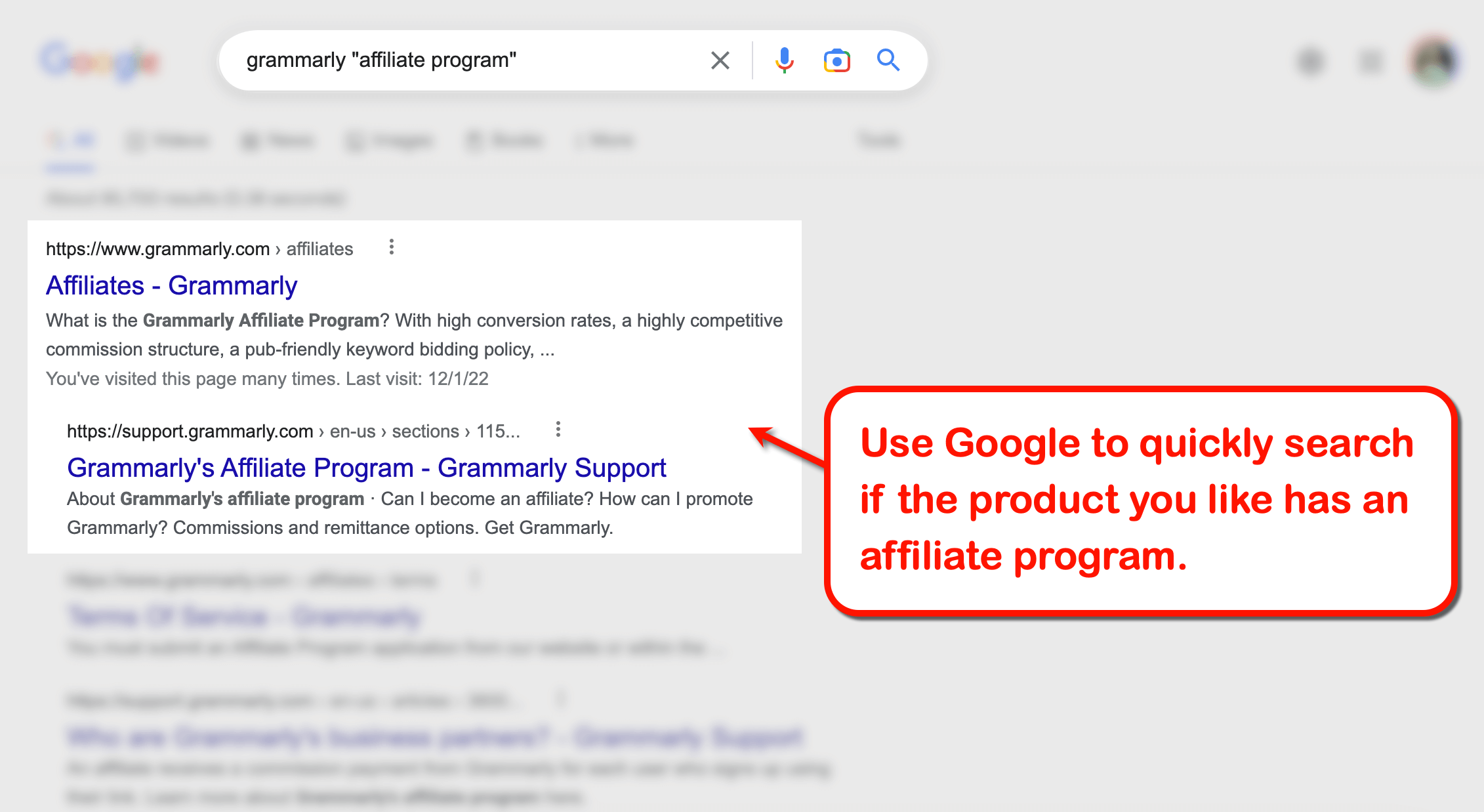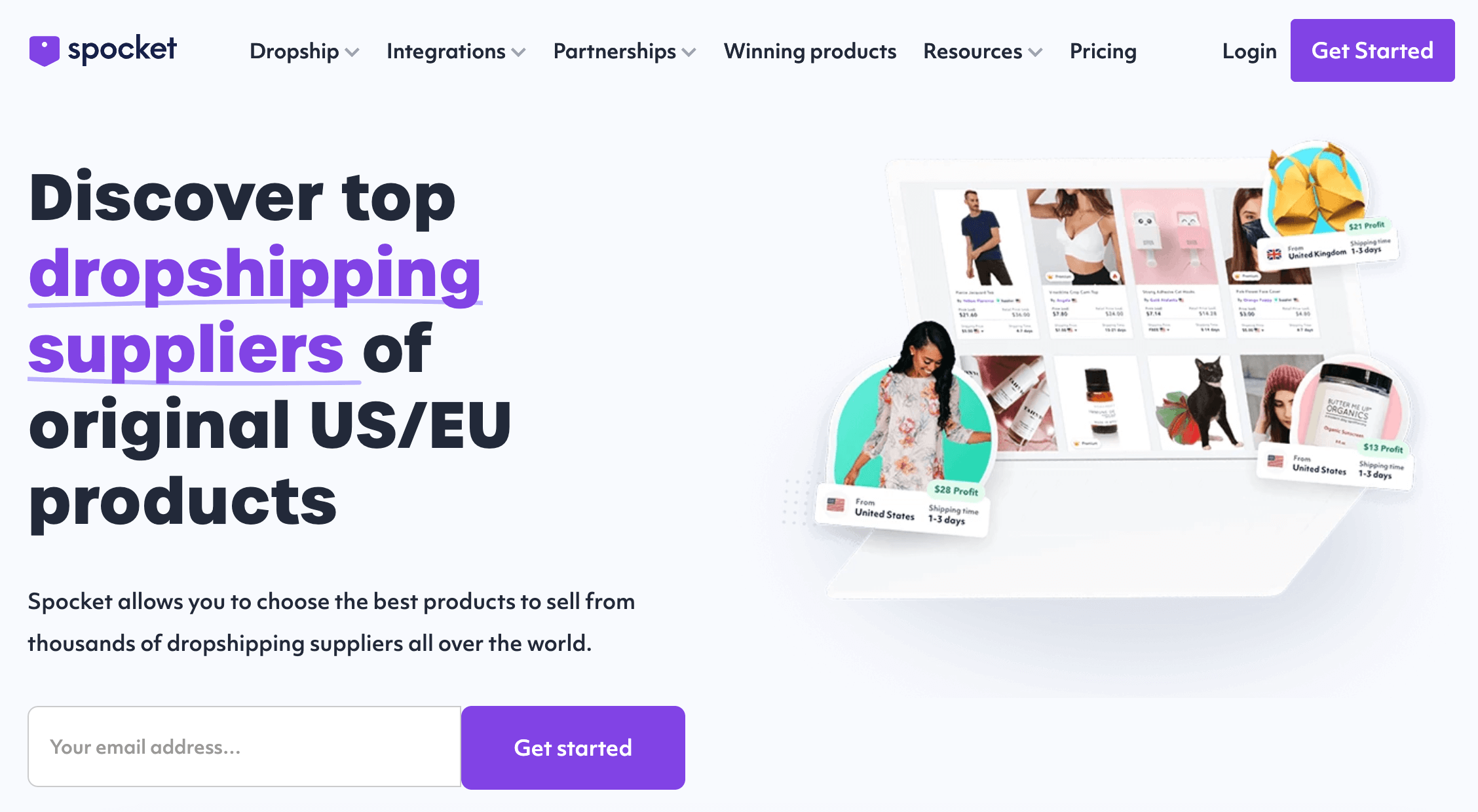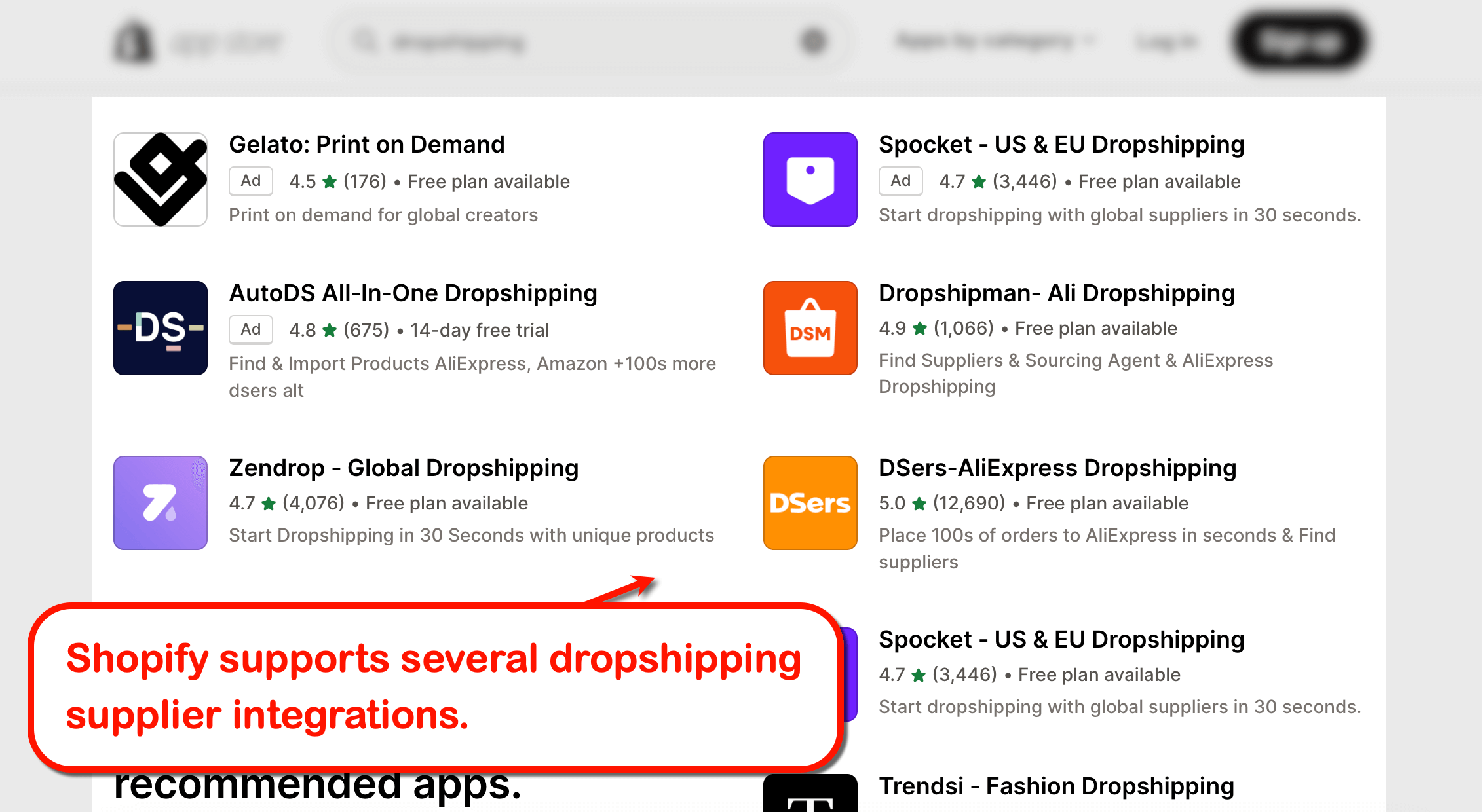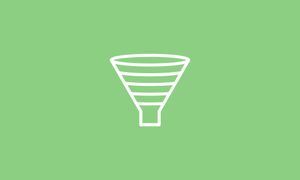If you're looking to create passive or active income streams and can’t decide between affiliate marketing vs. dropshipping, then this post is for you.
This guide details the key differences between affiliate marketing and dropshipping, including a side-by-side comparison of the two in terms of barriers to entry, costs, and profitability.
Let's dive in to find out which business model best suits you.
What is affiliate marketing?
In affiliate marketing, marketers earn commissions by promoting products or services from other businesses. Sales are attributed using “affiliate links,” which are unique URLs for every affiliate.
Statistics show that the affiliate marketing industry is worth upwards of $17 billion. Due to the success of the affiliate marketing business model, it is the top revenue source of roughly a third of websites.
Affiliate marketing pros
- Focus on marketing: Affiliate partners don’t have to worry about product development, inventory tracking, shipping, online store management, or handling customer service.
- Low barrier to entry: Anyone can sign up for an affiliate program and become an affiliate marketer without much preparation (some programs let you promote affiliate links on social media).
- Free affiliate marketing tools: Most affiliate programs provide members with free analytics, affiliate link management tools, and marketing materials (product photos, banners, etc.).
- Work from anywhere with anything: Affiliate marketers can work from anywhere using any device, such as a laptop, smartphone, or tablet.
- Easy to scale: Affiliate marketers can sign up for multiple programs and grow their affiliate business without additional costs. They can even promote different affiliate products—including competitors—in one campaign.
- Wide range of products: Affiliate marketing platforms like Amazon Associates, ShareASale, and ClickBank include a wide variety of products.
Affiliate marketing cons
- Lots of competition: Because anyone can become an affiliate marketer, most affiliate marketing niches are saturated.
- Small earnings for low sales: While it’s possible to find affiliate programs with a commission rate of 20%, companies can pay as little as 5% in commissions.
- You don’t control the pricing: Since you don’t own the products you sell, you have no control over its pricing model.
- You put your own brand image on the line: Your brand will be affected if certain issues surrounding your affiliate products arise.
What is dropshipping?
Dropshipping is a simplified eCommerce business model that allows you to sell another company’s products without needing to purchase and store inventory.
Although purchases are made through your own platforms, dropshipping suppliers will handle the packaging and delivery of products to customers.
Rather than paying commissions, suppliers sell products to dropshippers at wholesale prices. You then decide the product’s selling price, giving you direct control over your profit margins.
The dropshipping industry is forecasted to reach a value of over $300 billion in 2024.
Dropshipping pros
- Control your margins: Dropshipping grants you complete control over your margins.
- Low-risk business model: Unlike traditional eCommerce businesses, you don’t need a substantial overhead to start, manage, and grow a dropshipping company.
- Cash in immediately: The money you make from dropshipping is instantly accessible, unlike affiliate marketing, which has withdrawal requirements and delays.
- Work anywhere: Similar to affiliate marketing, dropshippers can also operate their business from anywhere—be it their home office or a local coffee shop.
- Dropship just about anything: It’s easy to find dropshipping suppliers that sell anything from kitchen utensils to car accessories.
Dropshipping cons
- You don’t control shipping: If a customer’s order doesn’t arrive on time, they’ll hold your dropshipping business accountable—not the supplier.
- Popular products become less profitable with more competitors: To gain market share, new dropshippers will sell the same products at a lower price.
- Building a dropshipping store takes more work. Unlike affiliate marketing, which lets you sell right away, dropshipping requires more preparations, like choosing a business structure and designing your virtual store.
- You need to keep customers happy: Although you’re not in charge of shipping and product quality assurance, you need to provide customer support through your own channels.
- Upfront costs: Building a dropshipping business needs funds for domain registration, hosting, and other essential services.
Affiliate marketing vs dropshipping: Business model comparison
Here’s a side-by-side comparison of affiliate marketing and dropshipping:
Section One: Barriers to entry
Both affiliate marketing and dropshipping methods for monetising your website, social media channels or blog. However, they have a few differences in barriers to entry.
How to start an affiliate marketing business
To become an affiliate marketer, look for an affiliate program you like to join, submit your registration, and wait for approval.
Search Google to see if a product or service you want to promote has an affiliate program. Use the company’s name along with the keyword “affiliate program” (with quotations) and inspect the results.

Follow the on-screen instructions to complete your registration.
In most cases, you only need to provide your contact details, payment information, and desired login credentials to become an affiliate. However, certain companies have additional requirements in their partner programs.
For example, Supermetrics require applicants to provide their tax information and their own website.

Another way to look for potential products to promote is via large affiliate networks. These platforms let you find thousands of affiliate products in categories like fashion, personal care, gadgets, hobbies, fitness, and more.
Some of the biggest affiliate networks to kickstart your affiliate marketing efforts are:
- CJ Affiliate
- ClickBank
- ShareASale
- Amazon Associates
- eBay Partner Network
After your approval, your affiliate program assigns a unique affiliate link to your account. Use this link to promote the affiliate product and get credited for sales.
How to start a dropshipping business
Build a dropshipping brand by planning your business idea, deciding your business structure, choosing dropshipping suppliers, and creating your online store.
Planning your dropshipping business is a crucial and time-consuming step.
To make money, you need a solid business concept that defines your brand, the product types you want to sell, and the customers you are selling to. This requires the same attention to detail as planning a digital content strategy (identifying your goals, researching your audience, brainstorming ideas, etc.).
After finalising your business plan, it’s time to look for dropshipping suppliers, like:
- AliExpress
- Spocket
- Wholesale2B
- SalesHoo
- Worldwide Brands

Take your time and compare dropshipping suppliers carefully—the success of your online business depends on it.
To ensure a sustainable and profitable business model, consider testing a sample order from these suppliers. Compare their delivery times and the actual quality of products.
Upon deciding on your dropshipping supplier, you’re ready to build your online store.
This leads to another set of steps:
- Register your domain. Come up with a unique domain name and register it with services like One Word Domains.
- Pay for hosting. To build a website with your domain, purchase a web hosting solution from companies like 20i.
- Pick an eCommerce platform. Use eCommerce platforms like Shopify or WooCommerce to simplify the online store creation process.
- Choose an online store theme. Unless you have your own team of web developers, choose a pre-made store theme that matches your brand.
- Use dropshipping integrations. Connect your dropshipping supplier with your online store using the right integrations or apps.

Advantage: Affiliate marketing
Although some affiliate programs ask for your tax information and your own website, ALL dropshipping businesses need these requirements. You also need to plan your business structure and build your digital storefront, whereas affiliate marketing lets you earn commissions just by promoting your affiliate link.
There's a lot more that goes into running an eCommerce store, even if you do dropship your products to your customers. You have more legal and moral responsibilities.
Section Two: Costs
Dropshipping vs affiliate marketing comes with different costs.
How much does affiliate marketing cost?
Choosing the affiliate marketing route doesn’t involve any expense.
In fact, there are countless guides on how to start affiliate marketing with no money.
You only need to spend money on domain registration and hosting if the affiliate program requires a website. Everything else is optional, including premium themes, SEO platforms like Semrush, and marketing tools.
However, you might want to consider investing in your content marketing to generate traffic and close sales.
How much does dropshipping cost?
With dropshipping, expect to pay up to £100 during the first month. This covers the costs of domain registration, website hosting, eCommerce tools, and product validation.
In the following months, you may need to pay a little bit more for your eCommerce software ecosystem (especially if you started with free trials). You also need to plan a budget for your marketing and advertising campaigns.
Advantage: Affiliate marketing
Affiliate marketing is much cheaper than dropshipping.
Just remember that, to grow with either business model, you need to invest in proven digital marketing strategies. This requires an investment depending on the results you expect.
Section Three: Profitability
The profitability of either affiliate marketing or dropshipping depends on the amount of work you put into them. However, it can be easier to increase profits and scale your business with dropshipping.
How much can you make with affiliate marketing?
Your affiliate earnings depend on two things: your sales performance and the commission rate you signed up for.
Suppose you sold a £59.99 product with a 20% commission rate. Your expected earnings for that sale should be £11.99.
Here are tips to earn more as an affiliate marketer:
- Invest in multiple traffic channels (search engines, social media, email, etc.).
- Look for well-known products that your target audience trusts.
- Compare commission rates between programs that sell similar products.
- Sign up for multiple affiliate programs that target the same audience (promote multiple products in one campaign).
How much can you make with dropshipping?
Since dropshippers control their own margins, it’s difficult to determine an accurate projection of your dropshipping store’s profitability.
Just remember that dropshippers normally mark prices up by 30%. With this strategy, a dropshipping business can make around $100,000 per year on average.
Follow the tips below to make more money with your dropshipping business:
- Increase your product selling prices.
- Sell high-ticket, focused-niche products.
- Improve the customer experience and make it a selling point.
- Launch paid promotions to widen your online reach.
- Build a solid online presence (promote on social media, publish blog posts, etc.).
Advantage: Dropshipping
Dropshipping generally offers higher profit margins and more scalability. Although affiliate marketing can be a truly hands-off business, dropshipping offers more opportunities to increase profits.
Affiliate marketing vs dropshipping: Which one should you pick?
Overall, affiliate marketing and dropshipping are both lucrative ways of making money online.
Affiliate marketing may be easier and more accessible, but dropshipping can be more profitable. It all depends on your determination, business acumen, budget, and available time.
Affiliate marketing is better if…
- You already have an audience and would like to monetise your reach quickly.
- You want to promote a specific product you love.
- You don’t have time for product validation, customer service, and frequent paid promotions.
- You want to make money online with zero capital.
Dropshipping is better if…
- You have experience running a retail business.
- You want higher profit margins.
- You have the budget for your dropshipping store.
- You’re knowledgeable in providing good customer service.
- You can dedicate a lot of time to your dropshipping business.
Frequently Asked Questions
Can you do affiliate marketing and dropshipping at the same time?
Yes, anyone can do affiliate marketing and dropshipping simultaneously. As long as you have time for both endeavours, you can make money from commissions and online store sales with no issues.
What’s better than affiliate marketing?
Dropshipping is more profitable than affiliate marketing, but it’s generally harder and more expensive. Publishing sponsored posts or promoting products as an influencer can also lead to bigger profits in the short-term.
Is affiliate marketing still profitable?
Yes, affiliate marketing is still profitable for both businesses and affiliate partners. Roughly a third of all online publishers consider affiliate marketing as their top revenue source.
Grow your affiliate or dropshipping business with time-tested strategies
Whether you run an affiliate business or dropshipping store, you need proven digital marketing strategies to generate more traffic and make more money.
Contact me here if you need help to develop a high-performing marketing campaign for your business.






